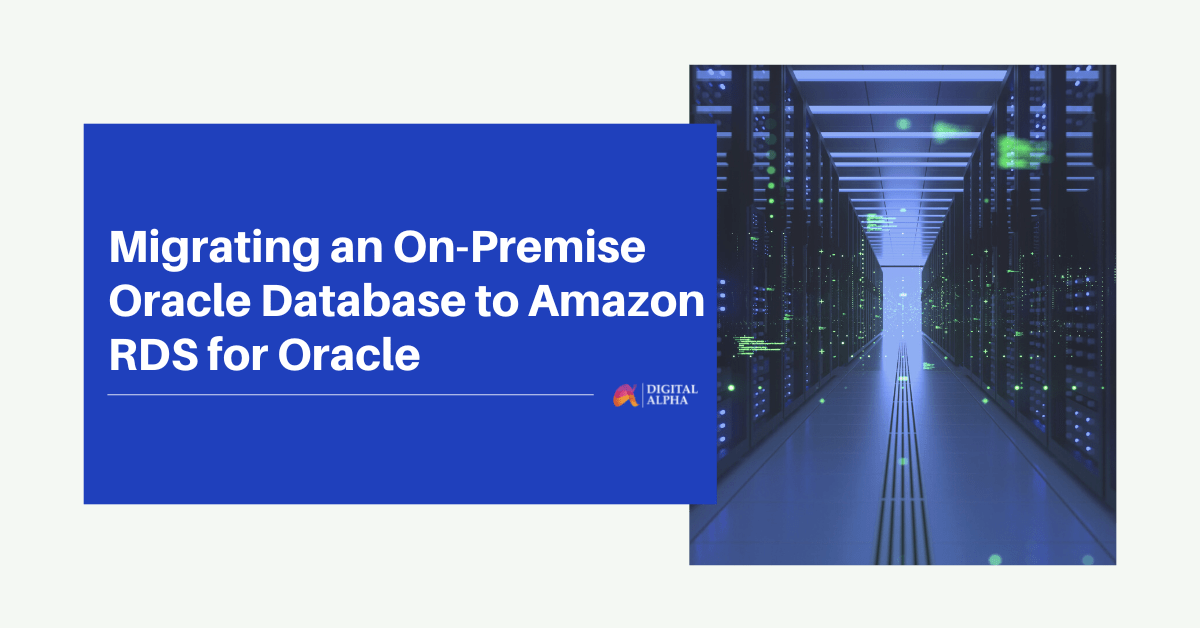Background
The ability to innovate faster on the cloud has led businesses rapidly move from on-premises data centers to cloud-based services. A global technology and financial management consultancy firm (client) in North America made significant investments in on-premises hardware running on Oracle databases. The firm had multiple critical applications running on the databases, and they needed a solution to deal with a high volume of traffic, faster application implementation, and deployment. The ability to manage the growing database needs to scale faster. Migrating their on-premises databases to Amazon RDS was the key solution to overcome all their challenges, and they leveraged Digital Alpha’s expertise in the migration journey.
Challenges
With applications hosted in their on-premise databases, the firm faced specific challenges related to cost, integrity, IT, and scale.
- Capacity planning: On-premise setups require upfront capital investments, and the IT team needs to plan the computing and storage for the entire project. If the team reaches maximum capacity or leaves hardware resources unused – both impact the schedule and cost.
- IT support: The IT team needs to maintain and manage servers and constantly upgrade the infrastructure to handle the workload. Planning these upgrades becomes challenging if multiple teams share the same infrastructure.
- Data loss: A malfunction in the system can cause a massive loss of data, as on-premise storage systems have all data stored on internal servers.
- Scale: On-premise environments require installing new hardware and bringing in resources to scale while building new applications or solutions that demand more storage space.
- Cost: Computing, memory, storage, upgrades, and hardware refreshes add high costs for on-premise servers.
Solution
The transition from on-premise to the cloud goes beyond the usual ‘lift-and-shift’ approach and requires a cloud provider to provide the data store and computing facility. Businesses use higher-level services such as fully managed databases and serverless computing offered by Amazon Web Services (AWS) to get the most out of their cloud adoption journey.
They successfully migrated to the cloud and updated their solution from Oracle to the RDS for Oracle’s latest version. The maintenance, operation, and interface between the two versions of Oracle were quite different, but they were able to overcome potential challenges.
Amazon RDS is a fully managed service for running relational databases on Amazon Web Services (AWS). It supports six database engines, including commercial options like Microsoft SQL Server and Oracle. With Amazon RDS, the database operations are managed by AWS, enabling the technology team to focus on innovation. Amazon RDS handles instance failover, data backups, and software updates. Using this solution, a self-managed Oracle database instance was migrated to a fully managed database on the Amazon Relational Database Service (Amazon RDS). The database migration was done using the AWS DMS service.

Benefits
While migrating Oracle Database applications to AWS, there are many opportunities to modernize and optimize the architecture. This migration provides increased agility and flexibility, as well as the potential to migrate to a fully managed service, such as Amazon Relational Database Service (Amazon RDS) for Oracle. RDS for Oracle offers to compute scaling, automated backups, event notifications, and more. It also helps relieve DBAs and other IT staff of many traditional aspects of Oracle Database infrastructure administration, allowing teams to focus on aspects that add more business value.
Businesses have major advantages of using AWS:
1. Cut database operating costs by 50%
2. Eliminate most database administration and hardware-management overhead
3. Lower latency of most critical services by 40%
4. Eliminate Oracle licensing cost
